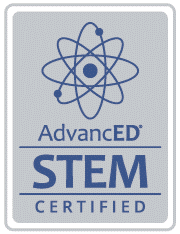Recently I came across an article about Boyan Slat, a young man who three years ago gave a TEDx talk about his innovative, “radical” plan to remove plastics from oceans. The talk went viral likely as a result of several factors: his plan was simple in that it’d be powered by the oceans themselves; it would rely on a 62-mile-wide floating wall anchored to the ocean floor; it would in theory remove millions of tons of plastic in the oceans; and the idea’s creator, Slat, was then 18-years old. Today and $2 million raised later, this young dreamer’s idea is being acted upon.
What caught my attention in the article was how much Slat’s approach is exactly the approach that STEAM programing is to inspire. As a young man diving in the Azores, Slat observed his surroundings and came across the problem of plastic pollution. As he says in his TEDx presentation, he thought about all the concerns of plastics in the oceans and eventually had a “little epiphany” about considering the list of concerns as challenges, and then “about a week later, as a school assignment, I had the chance to spend a lot of time on a subject of choice, together with a friend of mine, and this gave me the perfect opportunity to do new and fundamental research regarding plastic pollution.” Slat continued his researching, including numerous excursions to ocean spots, expanded his data collection to include collaboration from major universities and their researches, and honed his simple method of extraction into the current design that is to be deployed by 2020.
Some established experts in the field of ocean ecology are quoted in the article criticizing the plan as silly, a money dump, more likely destructive to sea life than beneficial, and, my favorite, a waste of time; yet Slat and his startup The Ocean Cleanup have published a 530-page study that presents researched data to refute each critique.
In Slat’s story the basic instinct of learning is inquiry, coupled with reflection, and followed by action, repeated. In a guided manner, isn’t this the Ignatian Pedagogical Paradigm (IPP) that Ignatian educators work to provide as learning (or in Ignatian-speak, “formative”) experiences for their students? Observe through context and experience. Reflect to become aware of the greater implications of experiences, to discern proper action from the affective nature of those experiences, and, following that action, evaluate the outcomes to lead to new observations from experience, essentially starting the process all over again in a continuous learning cycle.
It’s easy to fall into the trap of dismissing STEAM as a series of buzzwords, the way some might do the same for the IPP terms of experience, reflection, and action. But STEAM-learning is a 21st Century emphasis for the centuries-established IPP that is the foundation of learning and formation in an Ignatian school, whether in or out of the classroom. And just as some critics dismissed Slat’s conclusion as being a waste of time and money for an untested innovation, look closer to find all the research and tested rationale that, at the very least, makes the idea a sensible approach to try.
St. Ignatius wanted Jesuit schools to be cutting edge and flexible to best learning practices. This didn’t mean try everything for the sake of anything, but rather to be open to what experience-reflection-action might reveal as effective, desired outcomes of formation. I’m very proud, and excited, as the Rockhurst community practices this calling to design our STEAM-emphasis of the IPP.




Comments